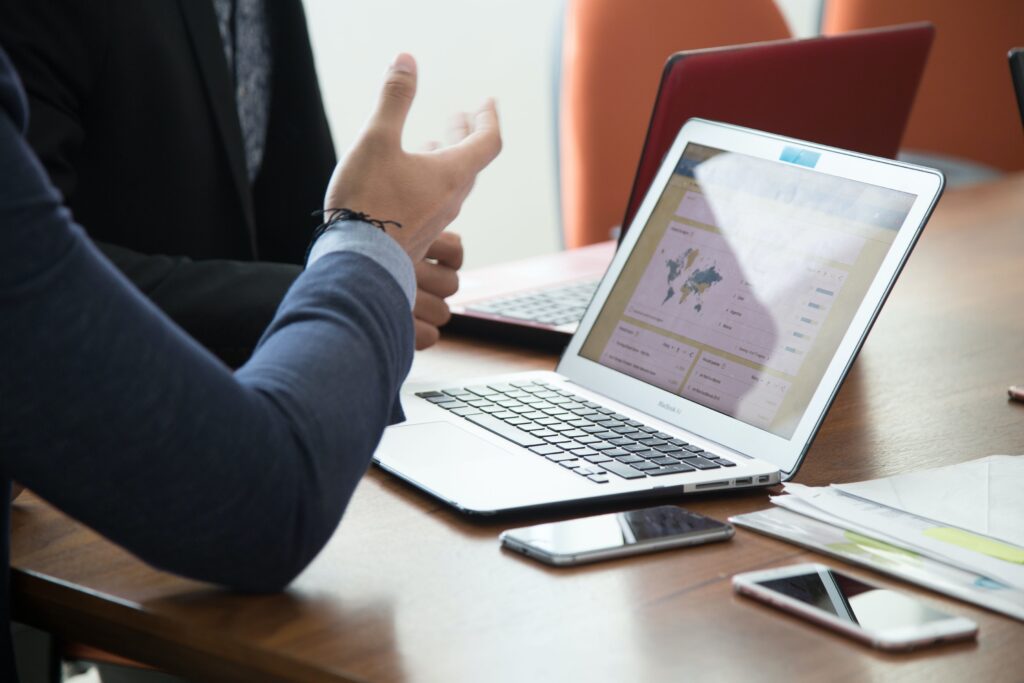Imagine this: you stumble upon an exclusive opportunity to purchase a high-ticket item, an offer that is not only luxurious but limited in availability. Your heart races, and a sense of urgency washes over you as you contemplate the possibility of owning something truly remarkable. This excitement is what brands strive to create when presenting high-ticket offers. In this article, we will explore the various strategies that can be employed to generate this coveted sense of urgency, ensuring that your high-ticket offers attract the attention and desire they deserve. Get ready to captivate and compel your audience like never before.
Understanding High-Ticket Offers
Defining high-ticket offers
High-ticket offers refer to products or services that are priced significantly higher than average or low-cost offerings in the market. These offers usually cater to a niche or premium market segment, targeting customers who are willing to invest a substantial amount of money in exchange for exceptional value or exclusive benefits. High-ticket offers often require a larger financial commitment from customers, making the sales process more complex and strategic.
Understanding the psychology behind high-ticket offers
To understand the psychology behind high-ticket offers, it is essential to delve into the mindset of potential buyers. When customers are considering investing a significant amount of money, they seek assurance and justification for their purchase decision. They are looking for undeniable value, exclusivity, and a sense of prestige that comes with owning a high-ticket item. Understanding these desires and motivations of buyers allows businesses to tailor their marketing strategies and communication approaches accordingly.
How to approach a high-ticket offer
Approaching a high-ticket offer requires a strategic and thoughtful mindset. The first step is to identify your target audience and understand their specific needs and desires. Once you have a clear understanding of your ideal customer, you can tailor your offer to align with their expectations. Effective approaches often involve building trust and credibility through testimonials or case studies, highlighting the unique benefits and features of your offer, and emphasizing the long-term value it provides. Additionally, implementing urgency strategies, as discussed in the following sections, can further enhance the effectiveness of your approach.
The Importance of Urgency in Sales
Role of urgency in the sales process
Urgency plays a crucial role in the sales process, particularly when it comes to high-ticket offers. It creates a sense of scarcity and compels potential buyers to act quickly, fearing that they may miss out on an exclusive opportunity. Without urgency, customers may procrastinate or explore alternative options, causing potential leads to slip away. By incorporating urgency into your sales strategy, you create a heightened sense of importance and motivate customers to make a decision promptly.
Effectiveness of urgency in selling
The effectiveness of urgency in selling lies in its ability to tap into the fundamental human emotions of fear and scarcity. When presented with a limited-time offer or the fear of missing out on a highly desirable product, customers are often more inclined to take immediate action. Urgency creates a sense of importance and encourages customers to prioritize the purchase, overcoming potential barriers or objections they may have. By leveraging urgency effectively, businesses can significantly increase conversion rates and accelerate sales cycles.
Creating a sense of urgency in the buyer’s mind
To create a sense of urgency in the buyer’s mind, several techniques can be employed. Limited time offers, where the availability of the offer is restricted to a specific time frame, can create a sense of urgency and prompt customers to take immediate action. Similarly, limited quantity offers, where the number of available products or slots is limited, generate a fear of missing out and encourage customers to make a decision swiftly. Countdown timers can also be used to visually reinforce the urgency and time sensitivity of the offer. Additionally, offering bonuses or incentives for immediate action further motivates customers to act promptly.

Techniques to Create Urgency for High-Ticket Offers
Limited time offers
Implementing limited time offers is an effective technique to create urgency for high-ticket offers. By setting a specific deadline for the offer, customers are compelled to make a decision within the designated timeframe. This urgency helps overcome any hesitations customers may have and encourages them to take advantage of the offer before it expires. It is crucial to communicate the limited time nature of the offer clearly to customers, emphasizing that once the deadline passes, the opportunity will be lost.
Limited quantity offers
Creating a sense of scarcity by offering limited quantities of high-ticket products or services can also generate urgency. When customers perceive that the supply is limited, they are more inclined to take immediate action, fearing that they may miss out on the opportunity. This technique is particularly effective when paired with clear and transparent communication about the limited availability and the potential consequences of not acting promptly.
Using countdown timers
Countdown timers are visually impactful tools that create a sense of urgency in the buyer’s mind. By displaying a real-time countdown, customers are reminded of the limited time remaining to make a purchase decision. Countdown timers can be implemented on websites, landing pages, or even in email campaigns, reinforcing the urgency and motivating customers to act quickly. The use of visually striking designs and attention-grabbing messages enhances the effectiveness of countdown timers in creating urgency.
Bonuses for immediate action
Offering exclusive bonuses or incentives for customers who take immediate action can generate a sense of urgency. By providing additional value or benefits that are only available for a limited period, customers are incentivized to act promptly to secure these bonuses. This technique not only creates urgency but also enhances the perceived value of the high-ticket offer, increasing the likelihood of conversion.
Communication Strategies for Creating Urgency
Direct communication techniques
Direct communication techniques involve clearly and explicitly conveying the urgency of the offer to customers. This can be done through compelling sales copy, emphasizing the limited availability or time-sensitive nature of the offer. Direct communication also involves highlighting the potential negative consequences of delayed decision-making, such as missing out on a significant discount or exclusive benefits. By employing direct and explicit communication, businesses can effectively convey urgency and prompt customers to take action.
Using persuasive language
The use of persuasive language is an effective communication strategy to create a sense of urgency. By leveraging powerful and engaging words, businesses can evoke emotions and prompt immediate action. Words such as “limited time,” “exclusive,” “final opportunity,” and “act now” convey a sense of urgency and compel customers to make timely decisions. Crafting persuasive language involves understanding the desires and motivations of the target audience and tailoring the messaging accordingly. The use of storytelling techniques can further enhance the persuasive impact by evoking emotions and reinforcing the urgency of the offer.
Decoding verbal and non-verbal signals from the customer
In addition to direct communication and persuasive language, decoding verbal and non-verbal signals from customers is crucial in creating a sense of urgency. By actively listening to customers’ concerns, objections, or hesitations, businesses can address them promptly and provide reassurance or incentives to overcome barriers. Moreover, observing non-verbal cues, such as body language or tone of voice, can provide insights into customers’ level of urgency or engagement. By interpreting these signals, businesses can adjust their communication approach accordingly, further enhancing the effectiveness of their urgency strategies.

Leveraging Social Proof for High-Ticket Offers
Importance of testimonials and reviews
Testimonials and reviews play a vital role in creating a sense of urgency for high-ticket offers. When potential customers see positive experiences and feedback from satisfied customers, it instills confidence and creates a sense of trust. Sharing testimonials and reviews that highlight the value, impact, and satisfaction that previous customers have experienced can effectively motivate potential buyers to take action promptly. Collecting and showcasing authentic and compelling testimonials is crucial to leverage social proof successfully.
Influencer and celebrity endorsements
Incorporating influencer or celebrity endorsements is an influential strategy to create urgency for high-ticket offers. When a well-known figure or industry expert endorses a product or service, it adds credibility and prestige to the offer. This association with a respected and influential individual creates a sense of urgency as potential buyers strive to align themselves with the perceived value and status represented by the endorsement. Leveraging influencer or celebrity endorsements effectively involves aligning the endorser’s values and brand image with the high-ticket offer and communicating this association clearly to customers.
Case studies and success stories
Sharing case studies and success stories is another effective way to leverage social proof and create urgency for high-ticket offers. By showcasing real-life examples of how the product or service has positively impacted customers, businesses can provide concrete evidence of the value and effectiveness of their offer. Case studies and success stories allow potential buyers to envision themselves experiencing similar benefits and outcomes, compelling them to take action quickly to seize the opportunity. It is essential to present these stories in a relatable and compelling manner, highlighting the specific results achieved and the transformational journey of past customers.
Maximizing Value Presentation
Presenting the exceptional value of the offer
Maximizing the presentation of the exceptional value of a high-ticket offer is crucial in creating a sense of urgency. Customers need to clearly understand the unique benefits and advantages they will gain from investing in the offer, beyond the mere monetary cost. Highlighting the exclusivity, personalized features, exceptional quality, or transformative impact of the product or service builds perceived value and prompts customers to prioritize the purchase. Visual representations, such as infographics or comparison charts, can be effective tools to communicate the value in a concise and visually appealing manner.
Communicating the cost of missed opportunities
One effective strategy to create urgency is by communicating the cost of missed opportunities. Customers need to realize the potential consequences of not taking action promptly, such as losing out on unique benefits, limited-time offers, or exclusive access. By effectively communicating the potential loss or regret they may experience, businesses can create a sense of urgency and motivate customers to seize the opportunity while it is available. Employing persuasive language and vivid storytelling techniques can reinforce the impact of missed opportunities, further enhancing the urgency of the offer.
Comparables and competitor analysis
Comparing and analyzing competitors or alternative options is a valuable strategy in presenting the value of a high-ticket offer. By highlighting the superior features, benefits, and advantages of your offer in comparison to alternatives, customers are compelled to recognize the unique value proposition and urgency of your offer. Effective communication of the differentiating factors and showcasing how your offer surpasses competitors in terms of quality, exclusivity, or effectiveness creates a sense of urgency and motivates customers to choose your high-ticket offer over other options.

Price Anchoring Techniques for High-Ticket Offers
Defining price anchoring
Price anchoring is a psychological technique that involves presenting a higher-priced item or option as a reference point for potential buyers. By introducing a higher price point initially, it anchors the perception of value and can make a comparatively high-ticket offer seem more reasonable or advantageous. Price anchoring creates a sense of urgency by positioning the high-ticket offer as a favorable alternative compared to the higher-priced option, enticing customers to make a decision promptly.
How price anchoring works with high-ticket offers
Price anchoring with high-ticket offers leverages the concept of relative value and perception. By presenting a more expensive or extravagant option initially, customers perceive the high-ticket offer as a more affordable or valuable choice. This technique not only creates a sense of urgency but also enhances the perceived value and desirability of the offer. Price anchoring strategically positions the high-ticket offer as a coveted opportunity, prompting customers to take immediate action to secure the perceived value and advantages it represents.
Best practices for price anchoring
In implementing price anchoring techniques for high-ticket offers, several best practices should be considered. Firstly, the higher-priced option used for anchoring should be relevant and aspirational, appealing to the target market’s desires and aspirations. Secondly, clear and transparent communication of the value and benefits associated with the high-ticket offer is essential. Customers need to understand the advantages they will gain from the offer and how it compares to the higher-priced option. Lastly, effective storytelling and persuasive language can further enhance the perception of value and urgency associated with the high-ticket offer.
Visual Presentation Techniques
Implications of high-quality visuals
High-quality visuals are paramount in creating a compelling and persuasive presentation of high-ticket offers. Visual elements such as professional product images, visually engaging infographics, and aesthetically pleasing web design contribute to the overall perception of quality and value. High-quality visuals not only capture the attention of potential buyers but also reflect the exclusivity and premium nature of the offer. Investing in visually appealing elements aligns with the expectations of high-ticket customers and enhances the overall effectiveness of the presentation.
Thoughtful web design
Thoughtful web design is an essential component of effectively presenting high-ticket offers. The design elements should be optimized to provide a seamless user experience, guiding potential buyers through a visually appealing and intuitive journey. Clear and concise messaging, strategically placed call-to-action buttons, and an aesthetically pleasing layout can create a sense of professionalism and trust. Additionally, incorporating interactive elements or video content can captivate and engage visitors, reinforcing the urgency and value of the high-ticket offer.
Video presentation for high-ticket offers
Video presentations are a powerful tool in creating a compelling and persuasive experience for potential buyers of high-ticket offers. Videos allow businesses to showcase the unique features, benefits, and value of the offer in a dynamic and engaging manner. By using storytelling techniques, visuals, and persuasive language, video presentations can evoke emotions and prompt immediate action. Whether in the form of product demonstrations, testimonials, or explainer videos, utilizing video content enhances the effectiveness of the presentation and stimulates the sense of urgency among viewers.
Follow-up Strategies
The importance of staying in touch
Follow-up strategies are integral to maintaining customer engagement and creating a sense of urgency. Staying in touch with potential buyers through personalized communication channels, such as email or phone calls, demonstrates a commitment to customer satisfaction and keeps the high-ticket offer top of mind. Regular and consistent touchpoints allow businesses to address any additional questions or concerns, provide further clarification, and reinforce the urgency associated with the offer. Staying in touch also ensures that potential buyers do not forget about the opportunity and are reminded of the value and benefits they stood to gain.
How regular follow-ups instill a sense of urgency
Regular follow-ups instill a sense of urgency by reminding potential buyers of the limited-time or limited-quantity nature of the offer. By presenting the remaining time or availability and reiterating the unique advantages, businesses can create a sense of urgency in customers’ minds. Regular follow-ups indicate that the offer is in high demand, and delaying the decision may mean missing out on the opportunity. This subtle reminder motivates potential buyers to act promptly, ensuring that they do not lose out on a privileged or exclusive opportunity.
Creating a multi-touch point follow-up system
A multi-touchpoint follow-up system ensures that potential buyers are exposed to various channels and forms of communication to reinforce the urgency of the high-ticket offer. This system includes a combination of emails, phone calls, personalized messages, or even retargeting ads. By creating a multi-touchpoint approach, businesses can reach potential buyers at different stages of their decision-making process, tap into different communication preferences, and consistently emphasize the urgency and value of the offer. This comprehensive follow-up strategy maximizes the chances of converting potential buyers into paying customers.
Measuring and Evaluating the Success of Your High-Ticket Offer Strategy
Key performance indicators (KPIs) to track
To measure the success of a high-ticket offer strategy, businesses should track key performance indicators (KPIs) that reflect the effectiveness of their approach. Some crucial KPIs to consider include conversion rates, average order value, customer acquisition cost, customer lifetime value, and sales funnel progression. Analyzing these metrics allows businesses to assess the impact of urgency techniques, value presentation, and follow-up strategies on their overall sales performance. Regular monitoring and analysis of KPIs provide valuable insights for optimizing the strategy and making informed decisions for future high-ticket offers.
Evaluating your sales funnel performance
Evaluating the performance of your sales funnel is vital in understanding the effectiveness of your high-ticket offer strategy. By closely monitoring the conversion rates at each stage of the funnel, businesses can identify potential bottlenecks or areas for improvement. Evaluating the time taken for customers to progress through the funnel, drop-off rates, or any significant deviations from the expected sales flow can provide valuable insights. This evaluation enables businesses to make data-driven adjustments to their urgency techniques, value presentation, or follow-up strategies, ensuring maximum effectiveness and success.
Adjusting your strategy based on feedback and results
Feedback and results are invaluable sources of information for adjusting and refining your high-ticket offer strategy. By actively seeking feedback from customers or analyzing post-purchase surveys, businesses can gain insights into the customers’ experience, satisfaction level, and perception of urgency. Identifying areas for improvement and paying close attention to the impact of urgency strategies or value presentation on customer feedback allows businesses to make informed adjustments. By continually iterating and optimizing the strategy based on the feedback and results obtained, businesses can enhance the overall effectiveness of their high-ticket offer approach.
